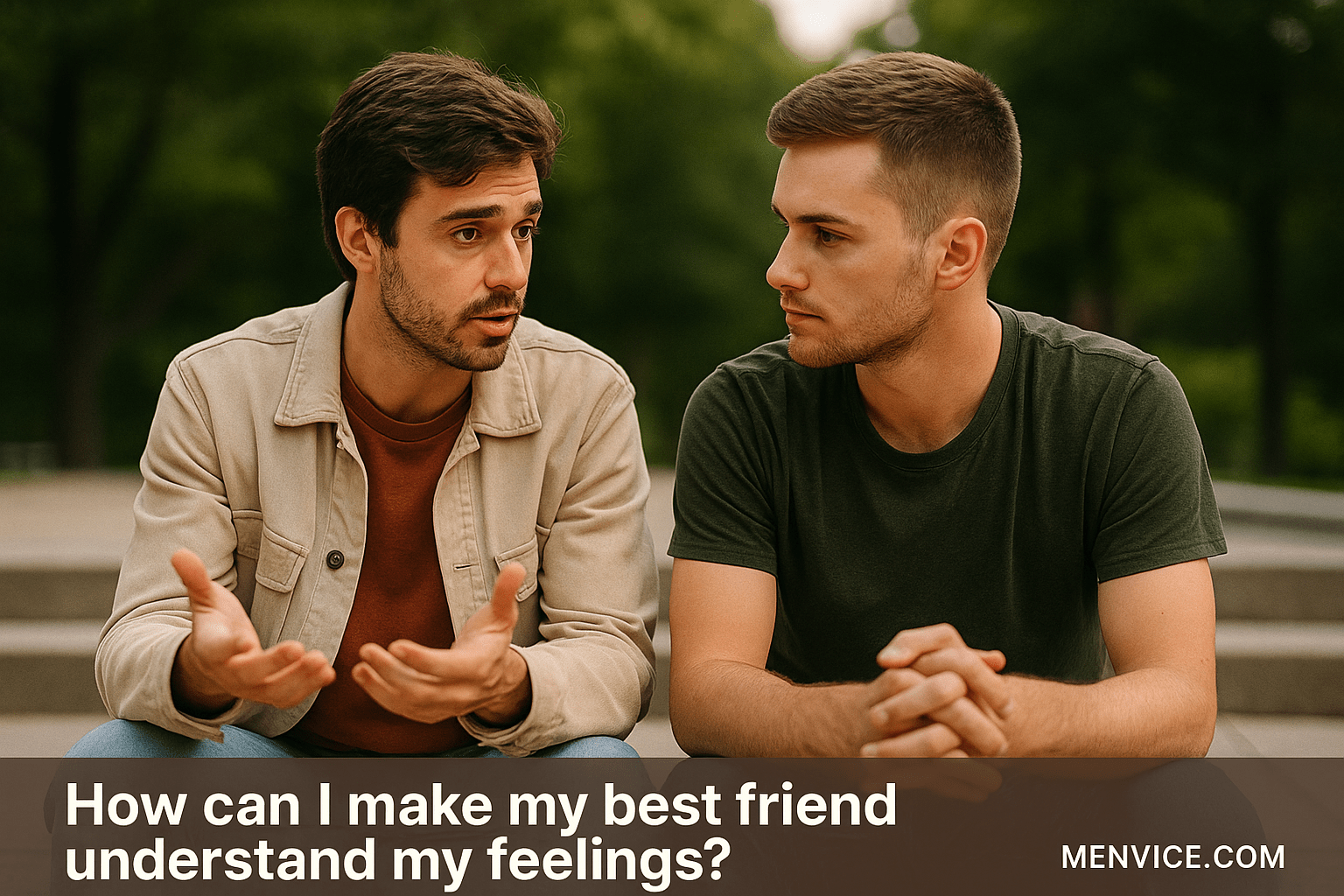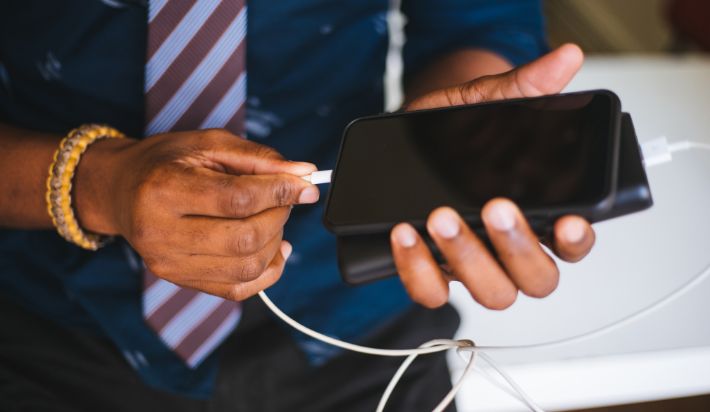
Elegance in Rebellion.
Own the Edge.
How Can I Make My Best Friend Understand My Feelings?

For most men, talking about feelings isn’t natural. We’re taught to solve problems, to “man up,” or to keep emotions private. But friendships matter deeply — and when your best friend doesn’t seem to understand what you’re going through, it can leave you feeling frustrated, unseen, or even lonely.
Maybe you’ve been hurt by something they said or did. Maybe you just want them to know how much you value them. Or maybe you’re carrying heavy emotions and don’t know how to share without making things awkward.
Here’s the truth: friendships thrive on honesty, but honesty requires skill. Dumping your emotions on someone rarely works. Neither does staying silent. The key is learning how to express yourself in a way your friend can hear, process, and respect.
This guide breaks down why your best friend might not “get” your feelings, and how to bridge that gap step by step.
Why Your Friend Might Not Understand You (Yet)
Before pointing fingers, it helps to understand why even a close friend might not fully get your feelings.
1. Different Communication Styles
Some men are blunt. Some are reserved. Some are natural listeners, others deflect with jokes. If your style doesn’t match theirs, your message gets lost.
- Example: You say, “I’ve been feeling ignored.” They crack a joke. It doesn’t mean they don’t care — it’s just how they handle discomfort.
2. Emotional Blind Spots
Your friend may have never been taught how to deal with emotions. If no one ever modeled empathy for him, he may genuinely not know how to respond.
3. Distractions and Priorities
Sometimes it’s not about you at all. Your friend might be juggling stress, family issues, work, or his own inner battles. His inability to understand isn’t rejection — it’s bandwidth.
4. Fear of the Conversation
Men often avoid heavy talks because they don’t want conflict or vulnerability. Your friend may sense where you’re going and change the subject out of discomfort.
Step 1: Get Clear on Your Own Feelings
Before you try to make your friend understand, you need to know what you’re really asking for.
- Are you hurt by something they did?
- Do you feel overlooked or taken for granted?
- Are you struggling personally and need support?
- Or are you simply trying to deepen the friendship?
👉 Write it down if you have to. Clarity makes the conversation smoother. Instead of saying, “You don’t care,” you can say, “When you cancelled last minute, I felt unimportant because I was really counting on that time together.”
That difference is huge.
Step 2: Choose the Right Setting
The when and where matter as much as the what.
- Bad setting: In a group, over text, or when one of you is distracted.
- Good setting: During a walk, late-night hangout, road trip, or anywhere private but relaxed.
👉 Why? Because eye contact can feel heavy. Side-by-side settings (walking, driving) lower pressure and make honesty easier.
Step 3: Use “I” Language, Not Accusations
It’s easy to say, “You never listen.” But accusations trigger defenses. Your goal is to be heard, not start a fight.
- Instead of: “You don’t get me.”
- Say: “I feel like I’m not being heard when I share things.”
Framing it around your experience keeps the focus on how you feel, not what they did wrong.
Step 4: Give Context, Not Just Emotion
Feelings without explanation confuse people. Context gives them a map.
👉 Example:
- Weak: “I’m upset with you.”
- Better: “I’m upset because when you shared my private story with others, I felt like my trust was broken.”
You’re connecting action → impact → feeling. That makes it much easier to understand.
Step 5: Listen After You Speak
It’s tempting to unload your feelings and expect immediate validation. But true understanding is a two-way street.
- Let them respond, even if they stumble.
- Ask, “Did that make sense?” or “How did you see it?”
- Remember, their perspective matters too.
This isn’t a monologue. It’s a dialogue.
Step 6: Don’t Overload All at Once
A common mistake men make: bottling up feelings for years, then unloading everything in one dramatic sit-down. That overwhelms your friend and makes it hard for them to process.
👉 Strategy: Share one issue at a time. Let it sink in. Build from there.
Step 7: Accept That Understanding Takes Time
Even the best friend won’t transform overnight. People need time to adjust. Sometimes you’ll have to repeat yourself, sometimes you’ll need to show patience.
Real understanding grows over repeated conversations and consistent actions, not a single heart-to-heart.
Real-World Scenarios & Solutions
Scenario 1: He Keeps Joking When You’re Serious
Why it happens: Humor is his defense against discomfort.
What to do: Call it out gently — “I know it’s easier to joke, but I really need you to hear me right now.”
Scenario 2: He Dismisses Your Problem as “Not a Big Deal”
Why it happens: Different perception of importance.
What to do: Explain the personal impact. “It might not seem big to you, but for me it meant a lot.”
Scenario 3: You’re Sharing but He’s Distracted (Phone, etc.)
Why it happens: Wrong timing or divided attention.
What to do: Pause. Say, “I want to share something important — can we talk when you’re free?”
Scenario 4: He Doesn’t Open Up in Return
Why it happens: Some men take longer to trust.
What to do: Lead by example. Consistently show vulnerability without pushing him to match it immediately.
Cultural and Gender Factors
- Men-to-men friendships: Often lean on action (hanging out, sports, gaming) rather than words. Opening up may feel foreign at first.
- Men-to-women friendships: Women may expect more verbal communication and emotional detail. Adjust how you explain.
- Cultural background: In some cultures, emotional expression is discouraged. Understanding this context helps set realistic expectations.
MenVice Quick Guide: Making Your Best Friend Understand
| Step | What to Do | Example That Works |
|---|---|---|
| 1. Clarity | Define what you’re feeling | “I feel left out when plans happen without me.” |
| 2. Timing | Choose a relaxed private setting | Bring it up on a walk, not at a party. |
| 3. Language | Use “I” statements | “I felt hurt” vs. “You hurt me.” |
| 4. Context | Explain the impact | “When you canceled, it felt like I wasn’t a priority.” |
| 5. Listen | Let them respond | “How did you see it?” |
| 6. Simplicity | Share one issue at a time | Don’t unload years of history all at once. |
| 7. Patience | Allow time for growth | Understanding builds over time. |
Gentle Reflection
Friendships don’t break because of conflict — they break because of silence. If you want your best friend to understand your feelings, you have to give them a chance. That means showing up honestly, respecting their perspective, and being patient as they learn how to meet you halfway.
When you approach it this way, you’re not just asking to be understood. You’re building a friendship that can handle honesty, mistakes, and growth — the kind of friendship every man needs.






